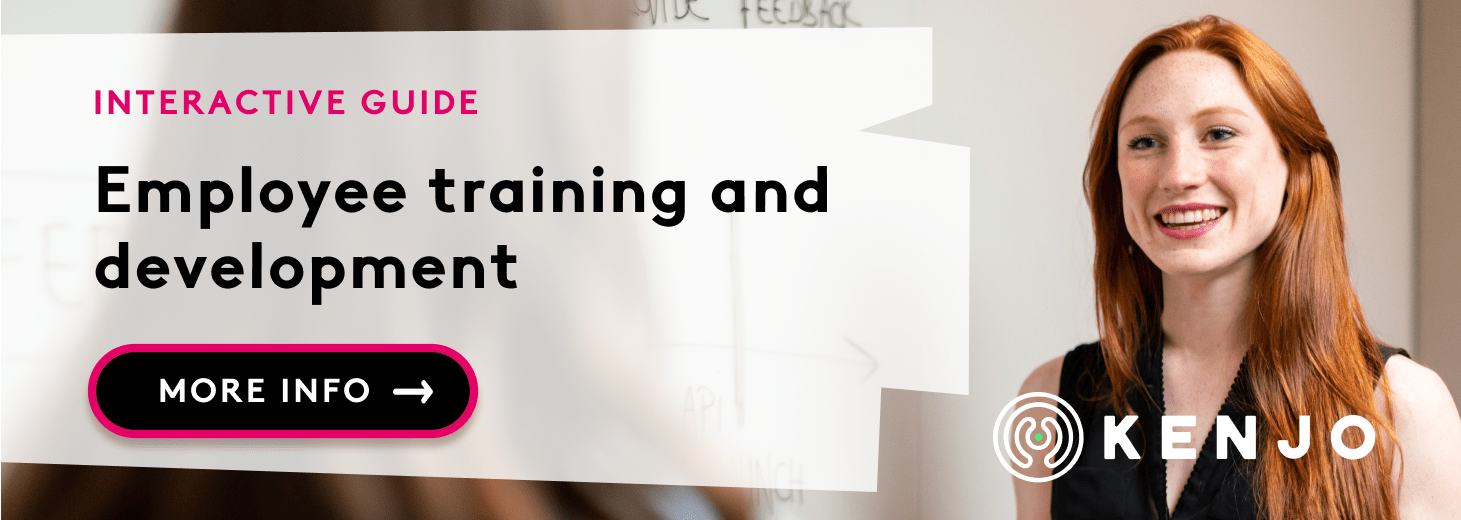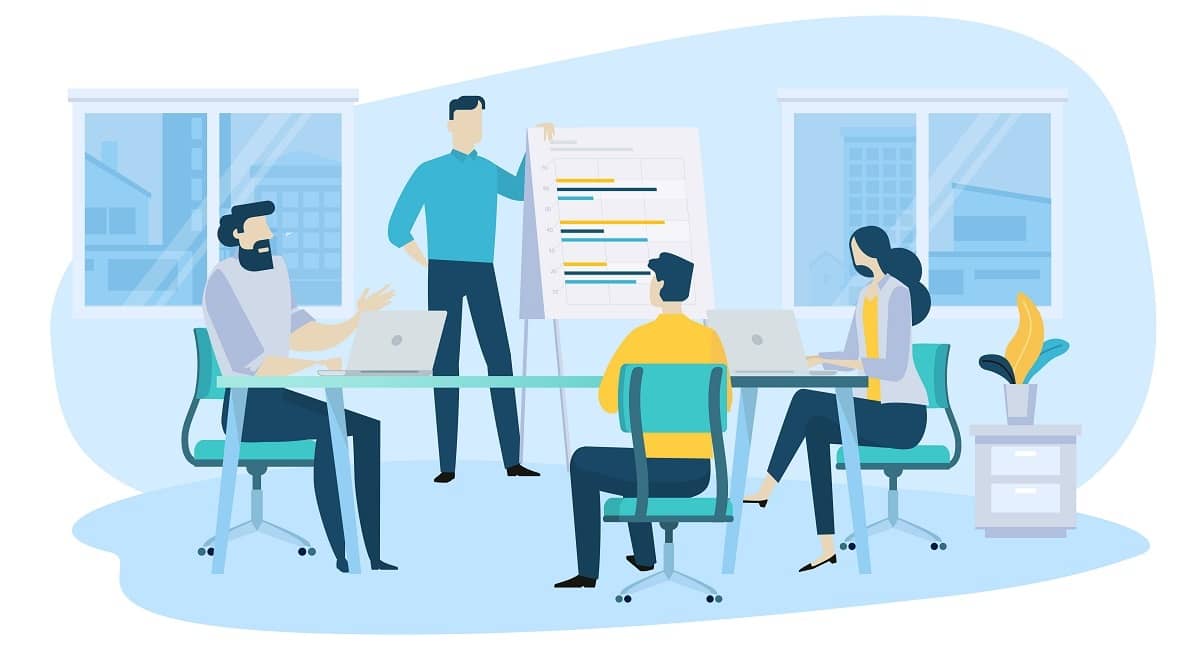Developing the right training and development plan can completely transform your company, both inside and out. It directly impacts employees’ motivation, and, as a result, their productivity, as well as being a useful tool for talent retention. So, you shouldn’t underestimate the value of a good company training plan.
We’ll go on to explain what this is, what it aims to do, and how to create a training plan, step by step.
What’s the definition of an employee training plan?
To answer this question, we could say that a training plan refers to all actions aimed at improving the knowledge and skills of the company’s workforce.
These plans are usually tailored to the employees’ and the company’s goals. The main goal is to remain competitive in the changing world in which we live.
What are the objectives of a training plan?
The objectives of a training plan are to directly improve employees’ motivation and performance, allowing the business goal to be achieved. In this way, a training plan can play a strategic role for the company.

Identifying and measuring employees’ skills
Before developing employee training plans, you need to establish a baseline; that is, to identify and assess the employees’ current skills.
A performance assessment software can help you to easily determine each employee’s strong points and areas for improvement. In this way, we’ll be able to design specific actions for each of them and achieve real results.
Improving the company’s performance
Strengthening an employee’s weakest areas through training will improve their individual performance, but also that of their department, and, ultimately, of the entire company. Each employee is part of a complex machine in which each component is important. If the company has ambitious goals, promoting employees' performance through training could be a good strategy to achieve them.
A study showed that a 10% increase in staff training can lead to an 8.6% increase in their productivity.
Developing the employees’ skills
One of the main goals of any company training plan is to help professionals to develop specific skills that could be key for them and for the organisation. This has a positive impact, obviously, on their work performance, but also on their motivation and commitment. This, in turn, reduces staff turnover and attracts new talent.
Improving the working environment
An employee who feels that the company cares about their development and professional growth and that it gives them the tools necessary to achieve their goals will be happier and more motivated and committed. This affects the entire organisation’s working environment.
A study by Gallup showed that companies with committed employees are 21% more profitable than those without.
Retaining talent
Another important aspect that stems from training is talent retention. Employees who feel “trapped” in the organisation and don’t see any opportunities to grow or evolve within it are more likely to accept another offer if given the chance.
According to a study, replacing an employee could cost a company the equivalent of 6 or 9 months’ salary. If, for example, the employee earns €60,000 per year, the cost of recruitment and training could reach up to €30,000 or €45,000.

6 steps to create a training plan in your company
How is a training plan created? We’ve looked at its definition and goals, so now it’s time to get down to work. We’ll go on to explain the six key steps to create your own plan.
1. Identify the needs
Before starting to design a training plan, it’s important to assess the staff’s needs. A good starting point is to analyse the strengths and weaknesses of each of the employees in order to identify common trends.
As we said before, a performance assessment programme could be a great help here as it will give us qualitative and quantitative data upon which we can base our work.
2. Set objectives for the programme
Any project needs to start with clear objectives. To identify them and set them out in writing, you can answer these questions:
- Why use this programme?
- What problems does it solve?
- How will the employees’ performance improve with this program?
- How will the employee achieve the business’ goals?
- Will the training prepare the employee to take on new roles?
- How will the program improve the rate of talent retention?
3. Involve the employees
In this early stage of brainstorming the company training programme, don’t hesitate to ask the staff what they’d like to learn. This kind of program works better when the employees are involved.
An easy way to gauge their opinion is to carry out an anonymous survey. Here are some questions to ask:
- What would make you feel more secure at work?
- Which learning methods work for you?
- What would improve your team’s performance?
- What are your interests outside of work?
4. Create useful, personalised and attractive experiences
If the employees don’t find the training useful, it will be difficult to get them involved and for them to get the full benefit from it. This is why it’s important to create experiences that take into account their needs, interests and how they learn best.
5. Plan the training
With all this information, you already know how to make a training plan. It’s best to use Human Resources software that will help you to shape and organise the different actions that will be carried out.
One the one hand, it can create general training that all of the company’s employees must attend. These can be on the subject of a brand, product or company culture.
On the other hand, it works to create specific plans to work on the weaknesses picked up in each employee in the initial analysis. It’s important that, in this section, we set clear goals and create a follow-up plan together with the employee.
6. Monitor the results
A training plan for employees is never static; on the contrary, it must constantly be evolving. It’s important to watch how the employees interact with the training, as well as to assess its effectiveness. In this way, we can improve, little by little.



